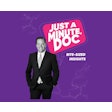
With 2020 in the rearview mirror, we asked eight members of the DIY Digital Dental Consulting team to share some of their best tips on cash flow and finances in the dental practice. Thoughts from four of them were provided yesterday, while four more share their tips below.
Analytics, by Dr. Jeanette Kern
 Dr. Jeanette Kern.
Dr. Jeanette Kern."You can't hit a target you cannot see, and you cannot see a target you do not have," Zig Ziglar said.
All sports teams and athletes keep statistics and analytic data for awareness, improvement, and strategic advantage. Our sport is health, specifically oral health, and we measure success using statistics within our business of dentistry. Many offices are now utilizing analytic-driven software such as Dental Intelligence and Dental Analytics to monitor their data.
Wanting a winning team is only a wish -- unless we are aware of our current situation, intend to improve our skills and outcomes, and practice to develop habits on a daily basis. A simple example in basketball is the free throw percentage. When a technical foul opportunity presents itself, the coach selects the best free throw shooter on the squad for those crucial points.
Dental analytics gives you a coach's advantage to see the overall situation from the sidelines. Who is your best hygienist when it comes to treatment plan acceptance? Isn't she or he the one who should give the assist of the case to the doctor? Your responsibility is to close the case and score the win.
Numbers and statistics are only as good as the analysis of them. A coach -- or savvy business owner -- can guide the team on areas of opportunity, point out blind spots that need focus, and help celebrate better techniques.
Accounts receivable (AR) follow-up system, by Candice Martin
 Candice Martin.
Candice Martin.An AR follow-up system is a must. With that in mind, I recommend the following five things:
- Have a system to ensure that all billable procedures are sent to insurance. Dentrix has a report called Procedures Not Attached to Insurance. This report shows you procedures that were posted but a claim was not created. If you have another practice management software, check to see if it has a similar report that you can run. I recommend running this on a daily basis to make sure no one was missed.
- Reply to insurance denials or requests for addition information that come back in the mail, ideally the day they are received.
- Run an insurance aging report and dedicate some uninterrupted time to work on outstanding claims on a weekly basis. Note: Always address the oldest claims first because most insurance companies will not pay on a claim older than one year.
- Have patients pay the estimated co-payment at the time of service. If for some reason the patient doesn't, make a notation on his or her account and create a reminder system where you select a date to follow up.
- Set aside time on a weekly or monthly basis to contact patients who have outstanding balances. Some third-party companies have the capability of sending the patient a text-to-pay link, which makes for a faster and more convenient way to pay.
Implementing just these five recommendations will assist in achieving a consistent cash flow.
The initial phone call, by Shawn Peers
 Shawn Peers.
Shawn Peers.The simplest phone calls, the ones where potential patients ask seemingly easy and obvious questions, can be critical to the cash flow of your practice.
You know the calls. They ask, "How much for a cleaning?" or "How much for a filling?" or "Do you take my insurance?" You get the picture.
The answers seem so straightforward. However, if that is the approach you take, you will have little success turning these calls into patients. Fewer new patients means less cash flow for your practice.
Let's be honest, we do not want a practice where all of our patients are fixated only on price. Reducing price is easy and it leads to a race to the bottom we just don't want to win. We want patients who are looking for good value.
However, these questions about price and/or insurance are really questions about value. It is just that patients lack the dental knowledge necessary to ask more sophisticated questions. Price is the only part of that equation they understand.
So, it is up to the dental team to do more than just answer the question. They need to convey value.
You do that by steering the conversation away from just price. You want to know why the patient is calling. People don't wake up in the morning and decide to call the dentist. They call for a reason.
Train your team to ask the questions that allow them to discover the reason in a way that connects with the patient. Get the patient's name and use it in the conversation. Find out when the patient last visited a dentist and/or hygienist. Explore what may have been positive or negative about that last experience. Ask if the patient is experiencing any pain or discomfort.
These are just some of the ways you can build rapport with patients and let them know how your office is the best choice for their dental needs.
Eventually, you will have to talk about money. Avoiding it entirely will seem evasive. However, you need to manage patient expectations and provide your dentist with the flexibility to have the final call on this. If the dentist determines more work is required than anticipated in that first phone contact, the patient may not be happy about a higher price tag than what was "quoted."
Talking about money for healthcare is not always an easy conversation, but it is an essential one. If you cannot do it comfortably and honestly, you will not be able to manage patient expectations. And without those new patients, you will eventually have a serious issue with cash flow in your office.
Inventory control, by Kathy Nicklaus
 Kathy Nicklaus.
Kathy Nicklaus.In terms of expenses, inventory control is second only to payroll overhead in a dental office. Having a trained team with one person dedicated to ordering, with another one or two always available to take over if needed, is key to keeping inventory expenses in check.
It is also necessary to know what is on hand and available, as well as the products used and by how much. Many items are ordered because "it's what we order every month," while others are scarce and team members run out while in treatment with a patient.
A tag system is the most convenient method of controlling what is on hand. Ask the supply company for a list with labels of the products ordered, attach to the item (last or second to last, depending on how much is used), and ask the team to place the tag in a central location for the dedicated person(s) to order. Keeping track for a year and eliminating what isn't used allows for other products to be introduced to the practice.
The comments and observations expressed herein do not necessarily reflect the opinions of DrBicuspid.com, nor should they be construed as an endorsement or admonishment of any particular idea, vendor, or organization.



















